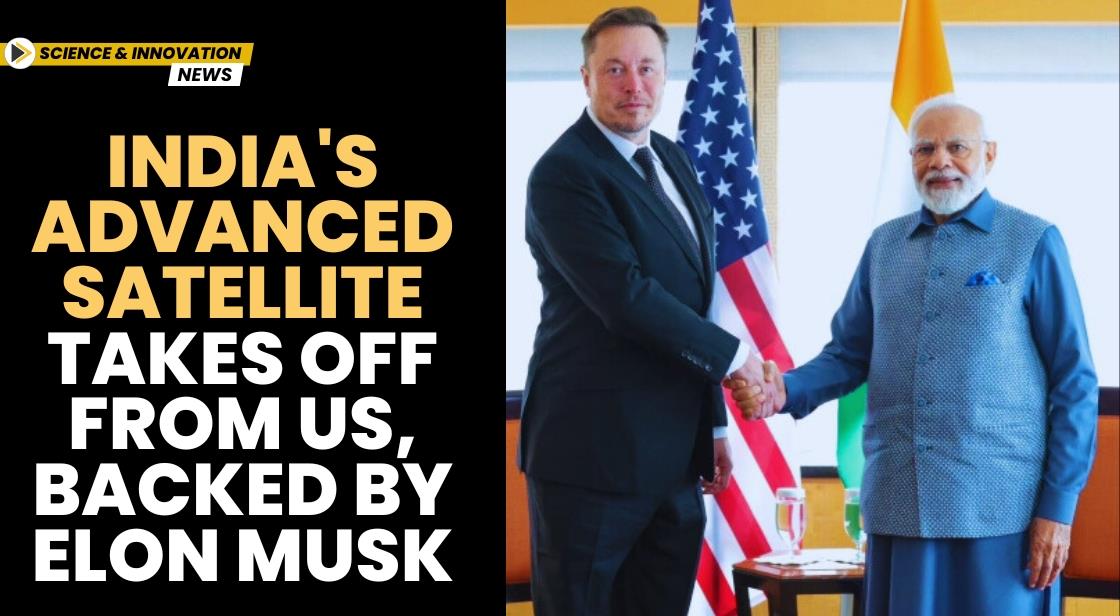India's Advanced Satellite Takes Off from US, Backed by Elon Musk

News Synopsis
SpaceX, the aerospace company owned by Elon Musk, has become the first major beneficiary of a multi-million dollar deal with India's space agency, the Indian Space Research Organisation (ISRO). In a historic move, SpaceX’s Falcon 9 rocket will launch India’s latest communications satellite, GSAT-20, also referred to as GSAT N-2, into orbit. The launch is scheduled for early next week from Cape Canaveral, USA.
The Growing Commercial Relationship Between ISRO and SpaceX
This marks the beginning of a series of commercial engagements between ISRO and SpaceX, positioning the American company as a key player in India's space sector. While some see both organizations as competitors in the low-cost space launch market, there is no doubt that SpaceX has emerged as a leader in global space exploration and commercial satellite launches.
Diplomatic Ties and Strategic Timing
The timing of this space launch coincides with the close relationship between US President-elect Donald Trump, Indian Prime Minister Narendra Modi, and SpaceX’s CEO Elon Musk. All three share mutual admiration for each other, with Musk expressing his excitement about India’s future and his support for Prime Minister Modi’s vision. The friendship between Modi and Trump adds an interesting layer to this deal, although the agreements were made well before the US elections, preempting any accusations of "crony capitalism."
Why SpaceX for GSAT-20 Launch?
The GSAT-N2 satellite, weighing 4,700 kg, is too heavy for India’s indigenous rockets, including the Launch Vehicle Mark-3 (often called "The Bahubali"), which has a maximum payload capacity of 4,100 kg for a geostationary transfer orbit. As a result, ISRO turned to SpaceX for this mission. Previously, India relied on Arianespace for launching heavy satellites, but with no operational rockets available, SpaceX became the most reliable option. Additionally, geopolitical factors, including the strained relations with China and Russia’s limited capabilities due to the Ukraine conflict, made SpaceX the ideal choice for this mission.
A Strategic Commercial Partnership
Radhakrishnan Durairaj, Chairman of New Space India Ltd (NSIL), ISRO’s commercial arm, spoke about the favorable deal ISRO secured with SpaceX for the GSAT-N2 satellite launch. The total cost of this commercial launch is estimated to be between $60 million and $70 million. Durairaj confirmed that the technical compatibility and commercial aspects made the deal an advantageous one for India. The satellite will have a 14-year mission life and will play a crucial role in enhancing India’s communication capabilities, including supporting in-flight internet services and providing 32 user beams.
The GSAT-N2 Satellite and Its Capabilities
The GSAT-N2 satellite is designed to offer advanced communication services across India. It features 32 user beams, including eight narrow spot beams covering the northeastern region and 24 wide spot beams over the rest of the country. The satellite will support internet connectivity, especially in remote areas, which is a critical development for India’s digital infrastructure.
Elon Musk’s Vision for India
Elon Musk’s enthusiasm for India’s growth is well-known. During a meeting with Prime Minister Modi in June 2023, Musk expressed his excitement about India’s future and his admiration for Modi’s leadership. Musk, a fan of India, has also been lobbying for approval to offer Starlink satellite-based internet services in India, which he believes will help remote villages. However, the Indian government, through Telecom Minister Jyotiraditya Scindia, has emphasized that SpaceX’s Starlink needs to meet all security requirements before a license is granted for satellite communication services.
India’s Growing Space Cooperation with SpaceX
Beyond the GSAT-N2 satellite, India has also inked another agreement with SpaceX’s parent company, Axiom Space. This partnership involves sending an Indian astronaut to the International Space Station aboard the SpaceX Falcon 9 rocket and Crew Dragon spacecraft. This mission is projected to cost around $60 million, with earnings from the mission being shared among four astronauts. This highlights the increasing role of private players like SpaceX in shaping the future of India’s space exploration.
Conclusion
India’s collaboration with SpaceX for commercial satellite launches marks a pivotal moment in the country’s space exploration history. The successful launch of GSAT-N2 and future projects with SpaceX are expected to strengthen India’s position in the global space market. Additionally, with increasing demand for space-based internet services, India’s partnership with SpaceX, particularly through Starlink, could lead to significant advancements in connectivity across the country.
You May Like









